This article was published in the September 2015 edition of NTEA
News.
As the work truck industry maintains a steady economic position, many
companies are gaining ground and starting to develop plans and strategies for
the coming year. To help members effectively navigate current and future market
conditions, NTEA provides targeted resources and information on key issues, such
as hiring expectations, sales levels and business growth patterns.
Twice a year, the Association surveys Distributor and Manufacturer
members to gain their perspective on today’s business climate, as well as
upcoming expectations. Aggregated data provides details on:
- Sales levels and quoting
activity
- Backlogs
- Production capacity
- Employment levels
- Key issues impacting member
businesses
- Future challenges and
opportunities
This article summarizes the most recent survey results and incorporates
year-to-year comparisons, making overall directional trends easier to identify.
The next survey will be emailed to Distributor and Manufacturer members in
January 2016. Please note your input is invaluable; a higher participation rate
helps ensure results are representative of the industry.
For more information, contact Summer Marrs, NTEA director of
communications and public relations, at 248-479-8913 or summer@ntea.com.
July 2015 survey
results
Of the respondents, 56 percent are
distributors and 44 percent manufacturers. Participating companies report annual
sales volumes of less than $2 million to beyond $70 million, with the largest
group representing $10–20 million (27 percent). Respondents listed the
construction, government/municipal and utility/telecom sectors as the three most
critical application markets for their business (in order of expressed
importance). Overall results are positive, with members citing strong sales,
quoting activity and employee levels.
As shown in Figure 1, 66 percent of survey participants report higher
sales than in the last half of 2014, with only 14 percent indicating a drop.
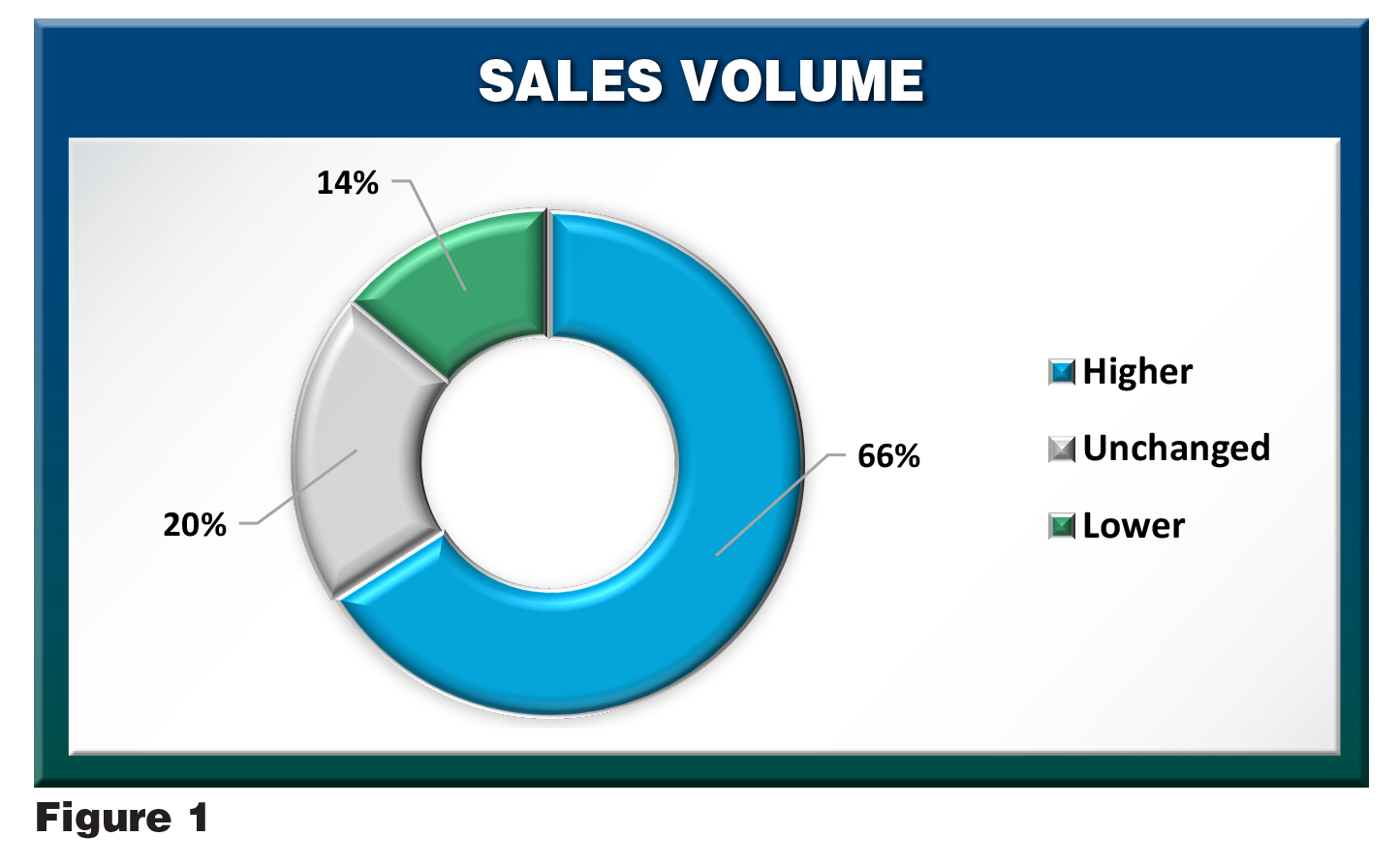
Forty-five percent believe business will keep gaining traction in 2015,
reflecting a reduced, but still reasonable, confidence level among industry
companies. A higher percentage anticipate a business decline for the
remainder of the year — 14 percent in July 2015 as compared to only 5
percent in July 2014 and 7 percent in July 2013.
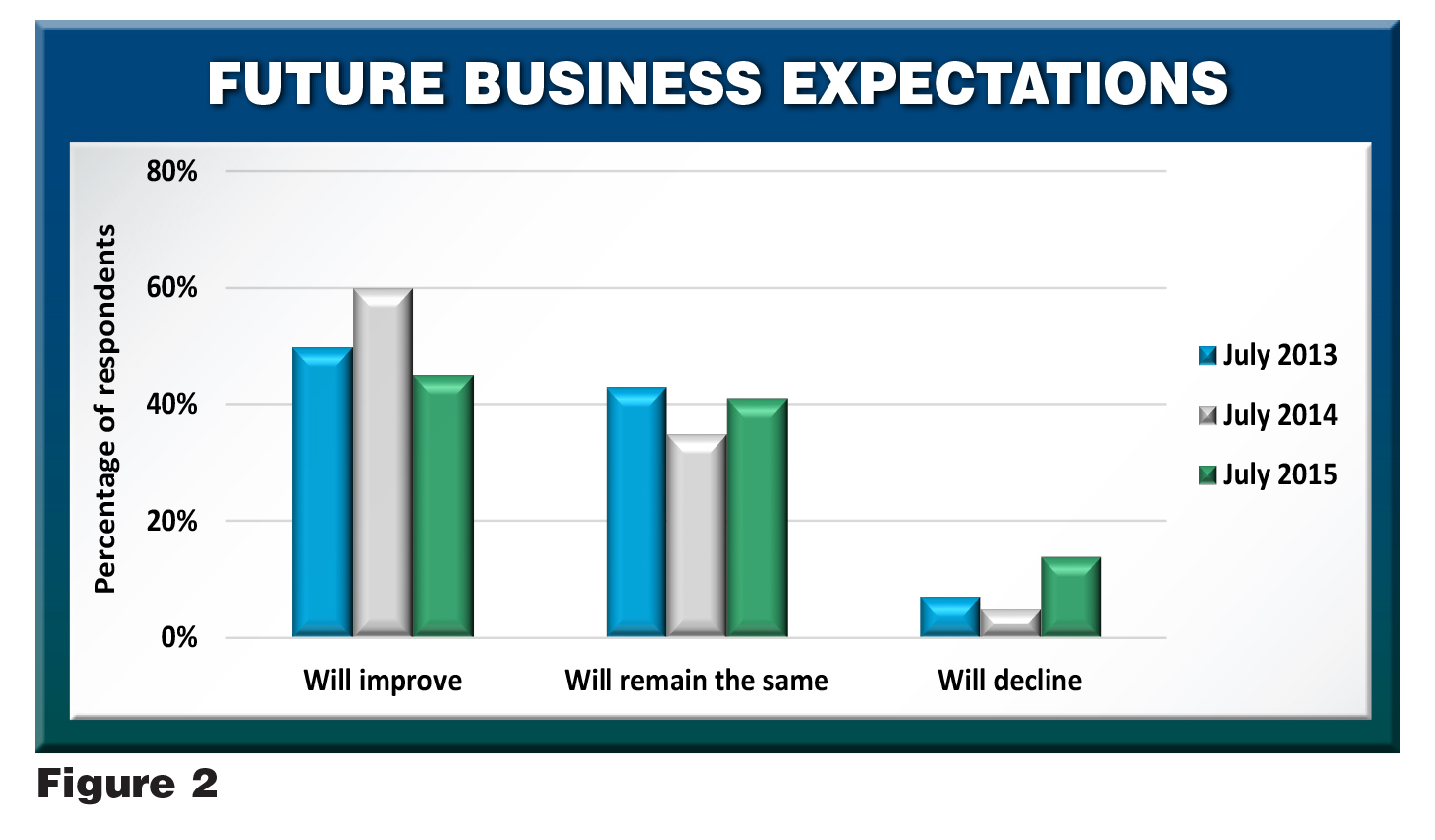
Regarding quoting activity, more than half of participants report
increases since January 2015, while 36 percent say levels have remained constant
and 11 percent cite a decline (see Figure 3).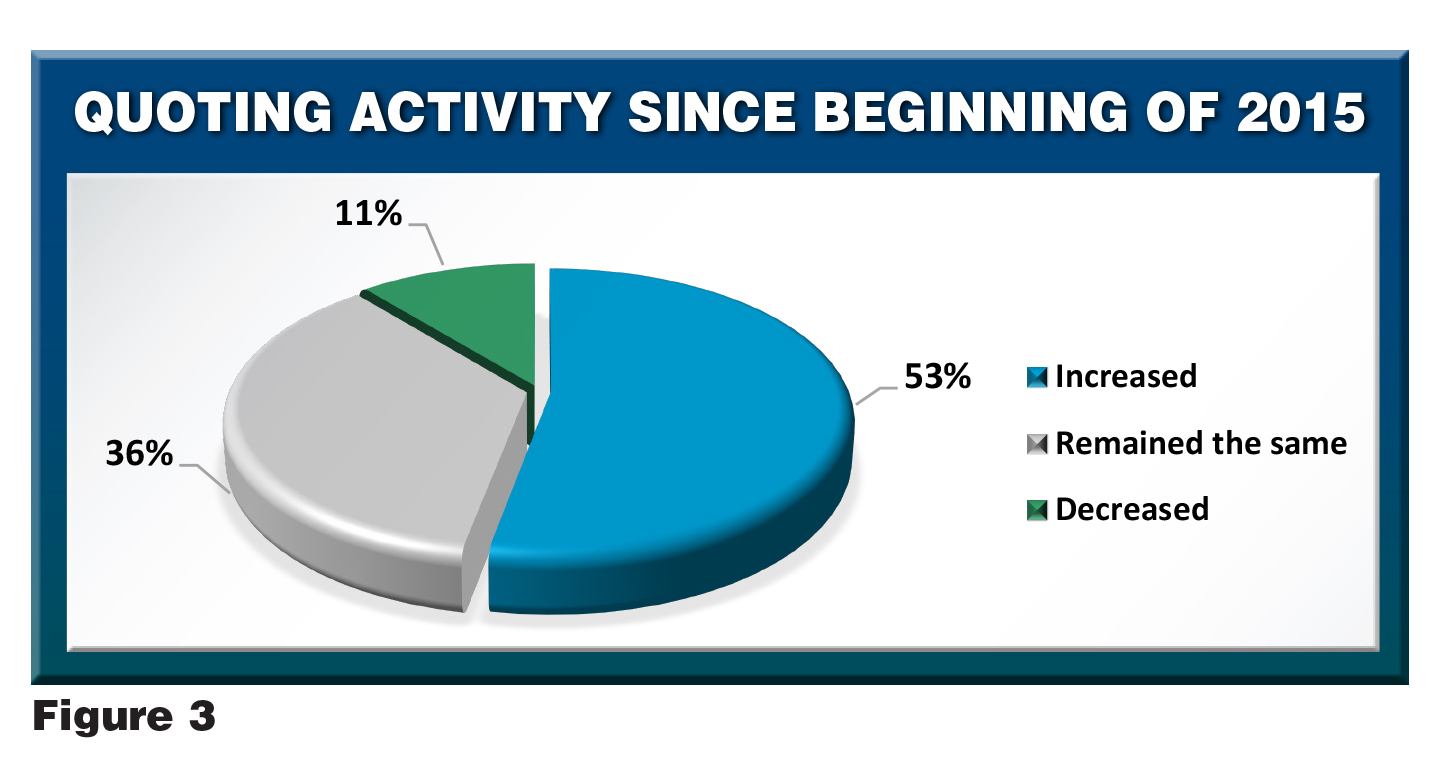
Employment opportunities remain consistent, with 55 percent of
respondents increasing staffing levels in July 2015 as compared to 56 percent a
year ago. However, 10 percent indicate a decrease in employees, as compared to
just 2 percent in July 2014.
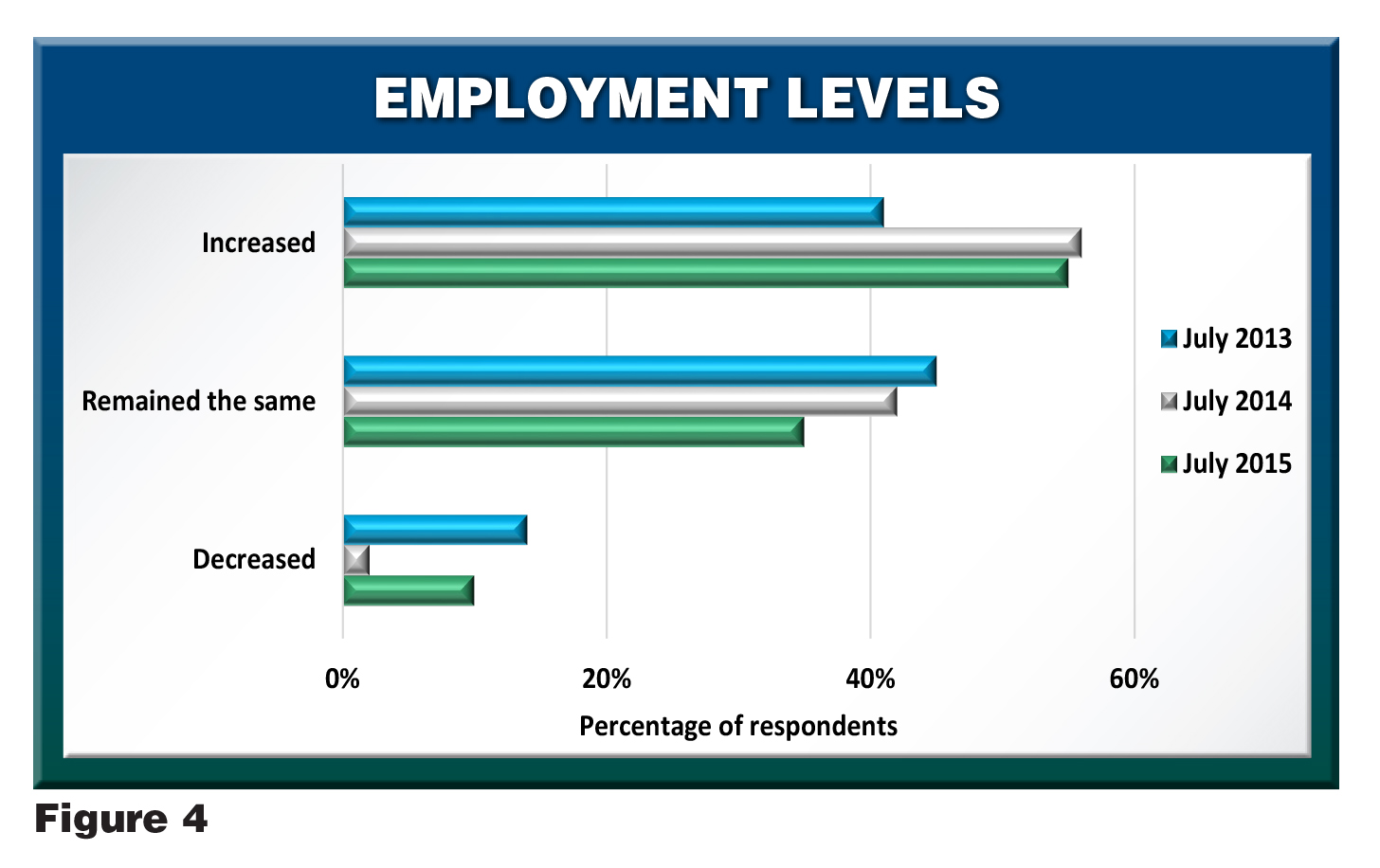
The number of backlogged companies remains relatively flat, with 83
percent in July 2014 and 81 percent currently. Of this total, 44 percent say the
amount of backlogs has increased since January 2015, while 21 percent cite a
decrease and 35 percent have a constant workflow.
Overall, backlogs are shortening slightly as compared to previous
years, indicating members are staying on top of heavy demand. Only 16 percent of
respondents have backlogs extending to 90 days or more (this data point is not
reflected in Figure 5, as it is a new variable). With steady industry growth
predicted through the remainder of 2015 and into 2016, business shortage is not
a top concern.
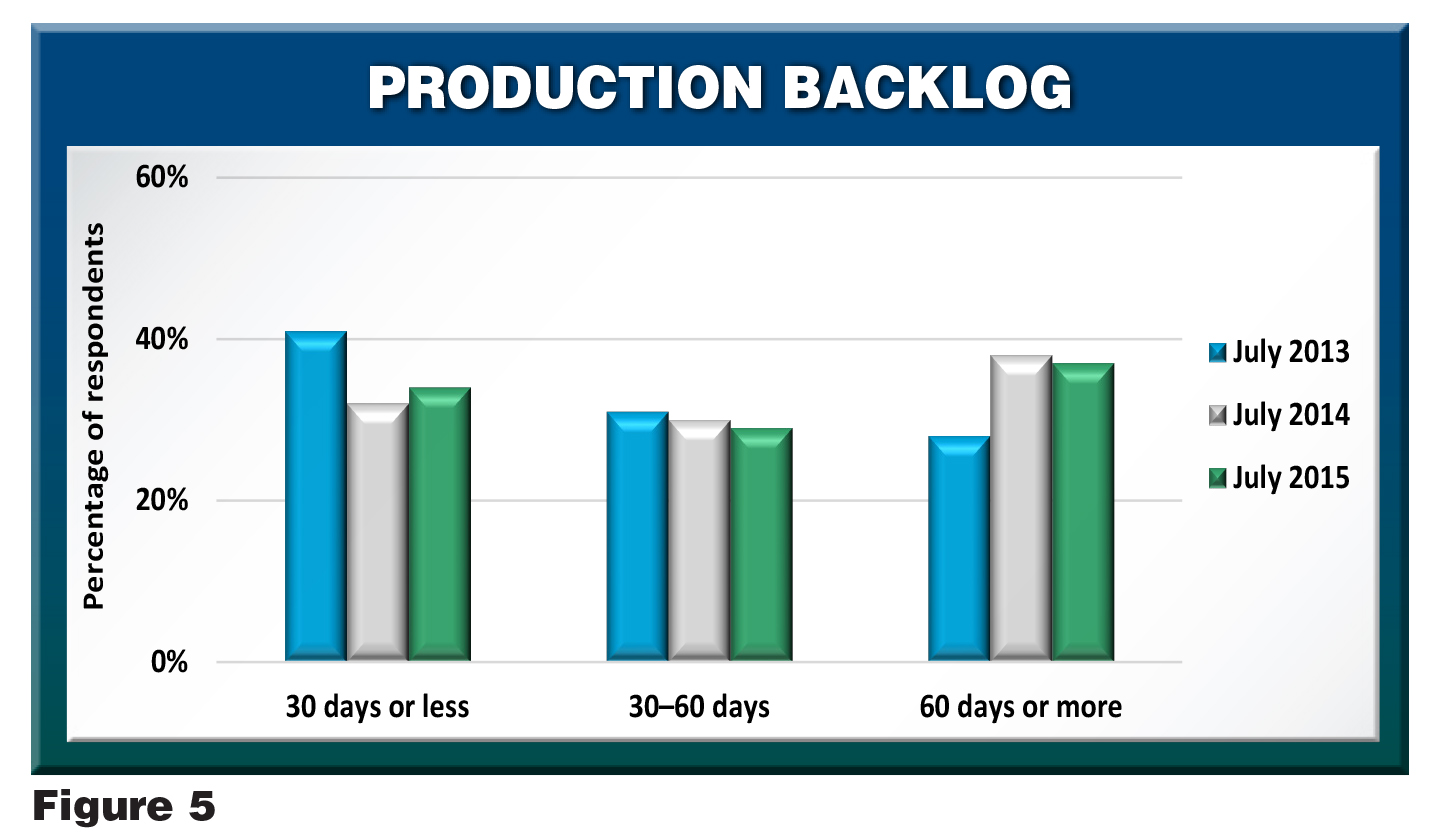
Survey respondents are working to keep pace with
backlogs by elevating operational capacity. Figure 6 indicates an increase in
factory volume, with 79 percent operating at 75 percent capacity or more, as
compared to 75 percent in July 2014 and 65 percent in July 2013.
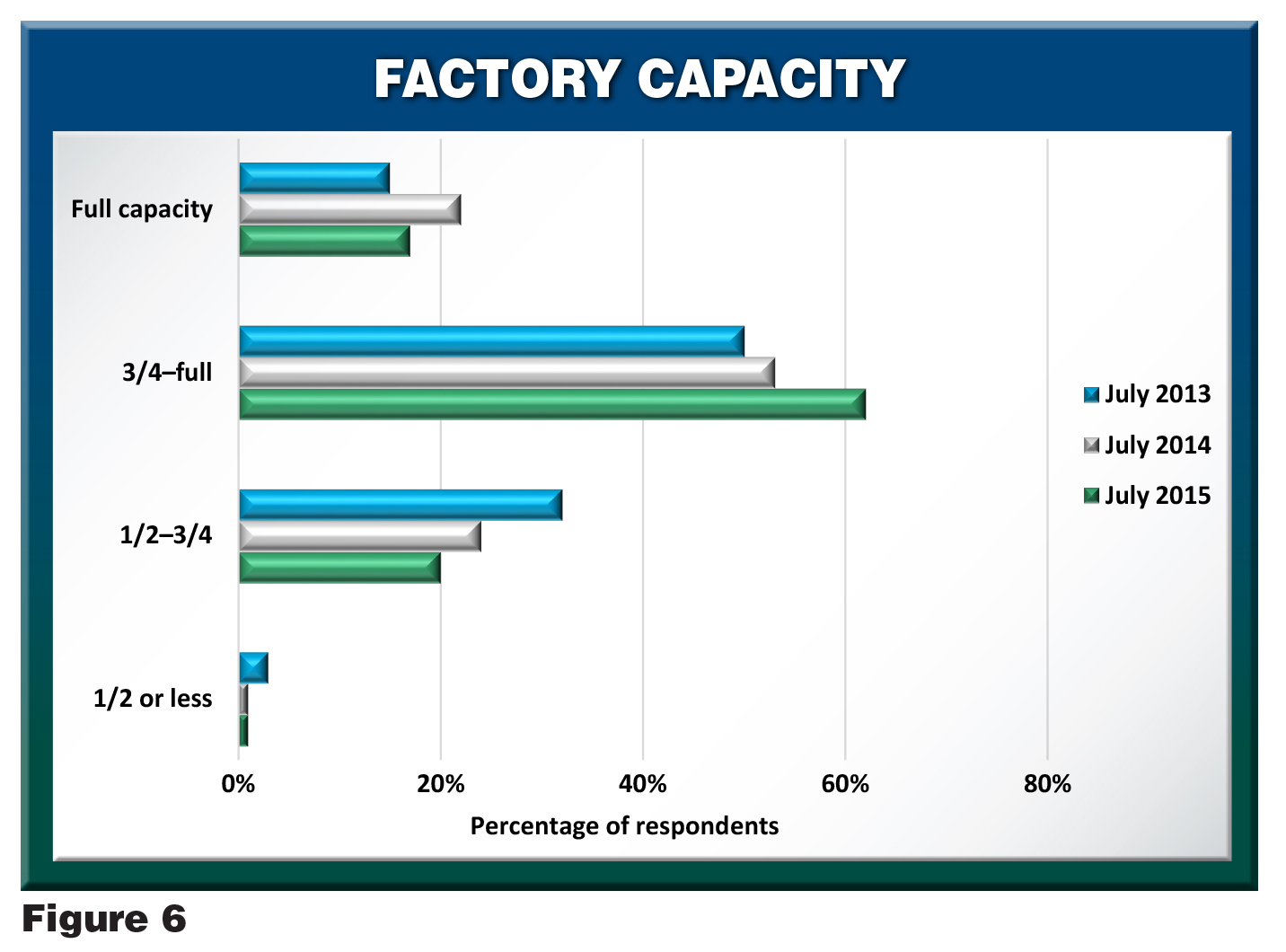
Factors affecting
business
Many market dynamics influence work truck
industry companies. Figures 7 and 8 reflect distributor and manufacturer
perspectives on key issues.
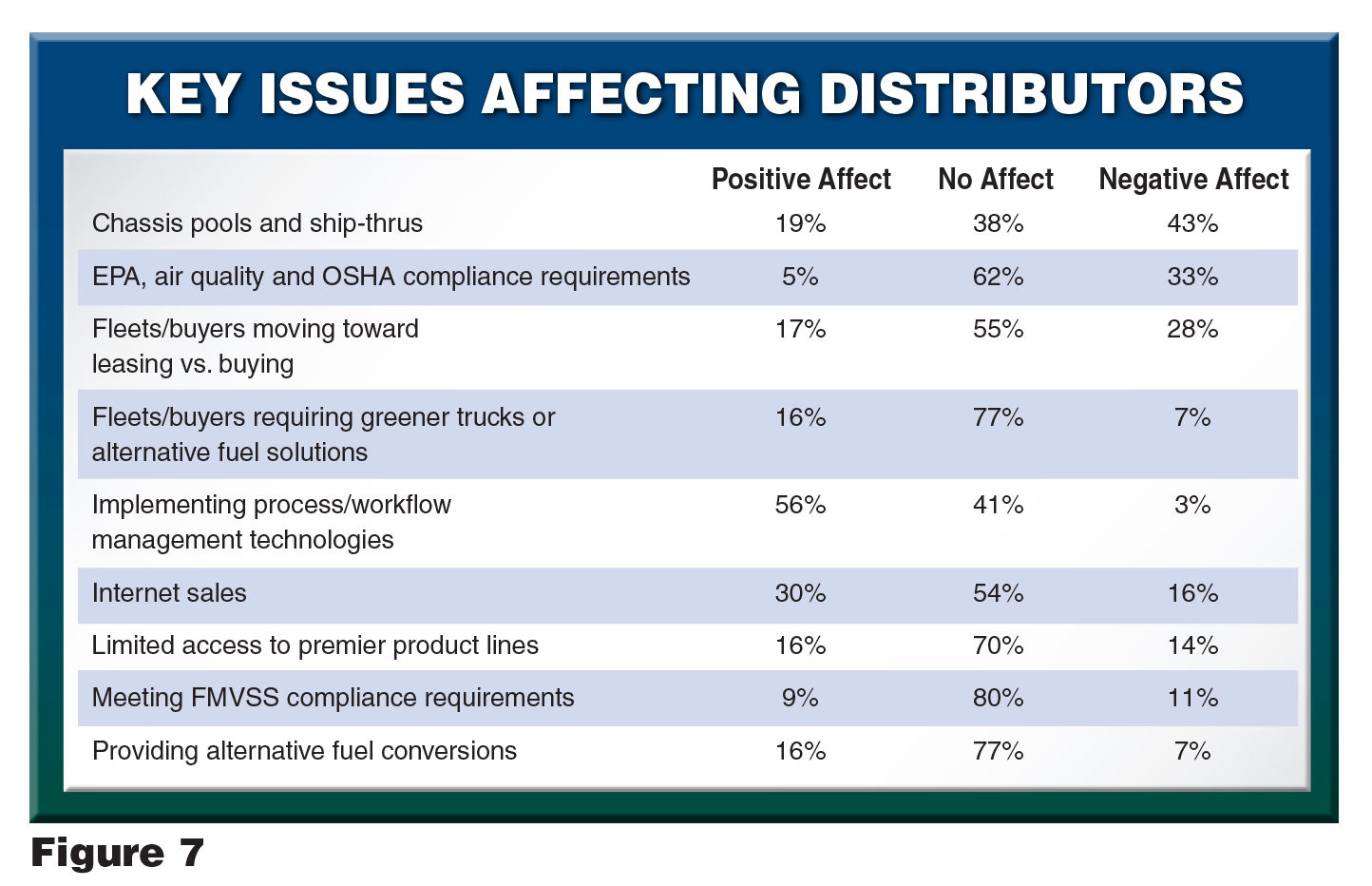
As shown in Figure 7, distributors feel implementing process and
workflow management technologies has the most positive effect on their
businesses. Conversely, chassis pools and ship-thrus have the greatest negative
impact. Distributors remain largely indifferent toward Federal Motor Vehicle
Safety Standard (FMVSS) compliance requirements, alternative fuel conversions,
and fleets or buyers requiring greener trucks or alternative fuel
solutions.
Similar to distributors, implementing process and workflow management
technologies has the highest positive impact on manufacturer business.
Factors cited as having a negative effect are chassis pools and
ship-thrus, and EPA, air quality and OSHA compliance requirements.
Several issues identified as having no real influence on participating
manufacturers include:
- Providing alternative fuel
conversions
- Having limited access to
premier product lines
- Meeting FMVSS compliance
requirements
- Fleets/buyers moving toward
leasing vs. buying
- Fleets/buyers requiring greener
trucks or alternative fuel solutions
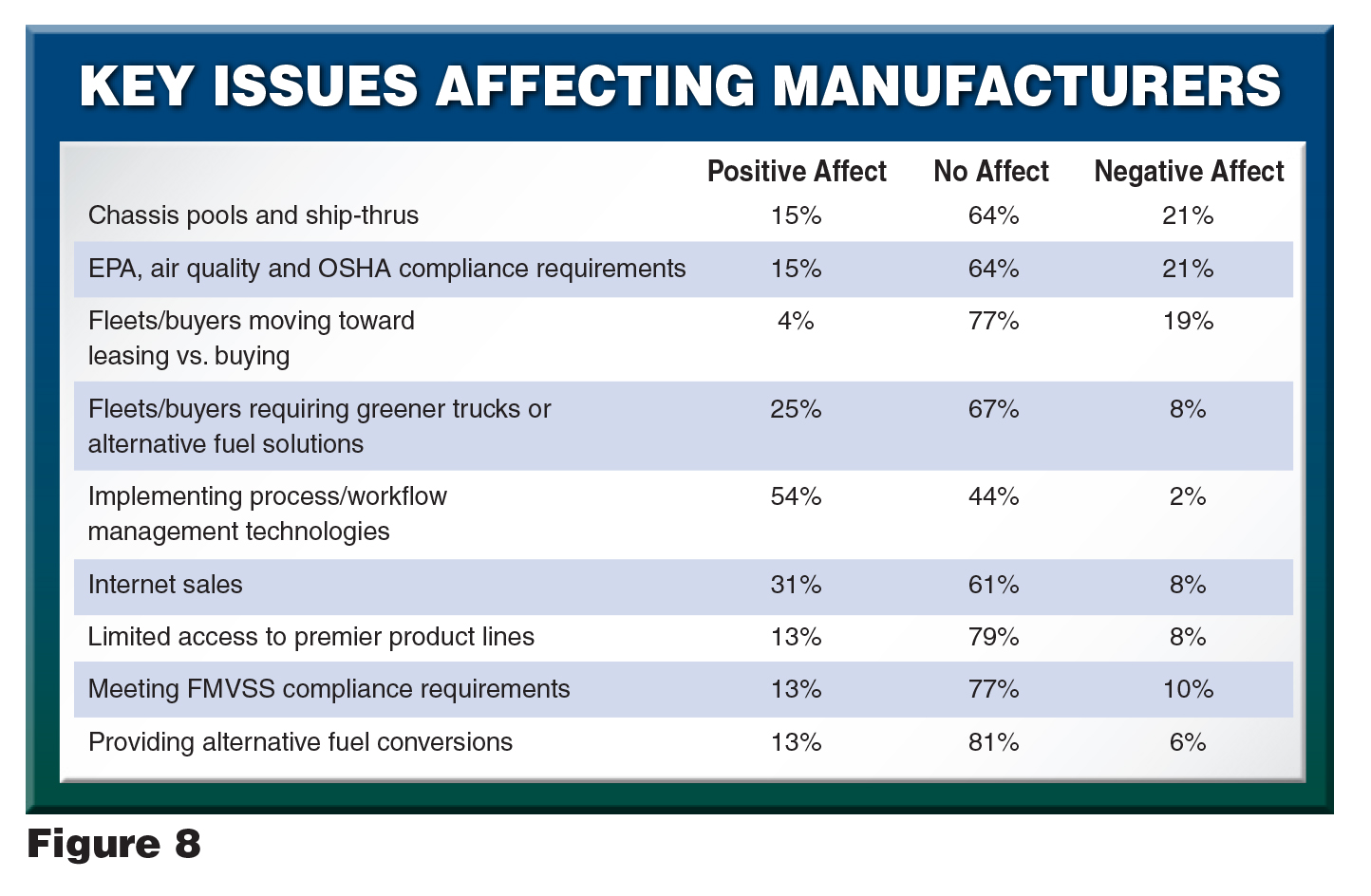
Industry
challenges
Despite 2015 growth projections, 56
percent of respondents believe local economic conditions pose the greatest
challenge to industry progress. Members are also troubled by federal government
financial/regulatory policy and global economic uncertainty.
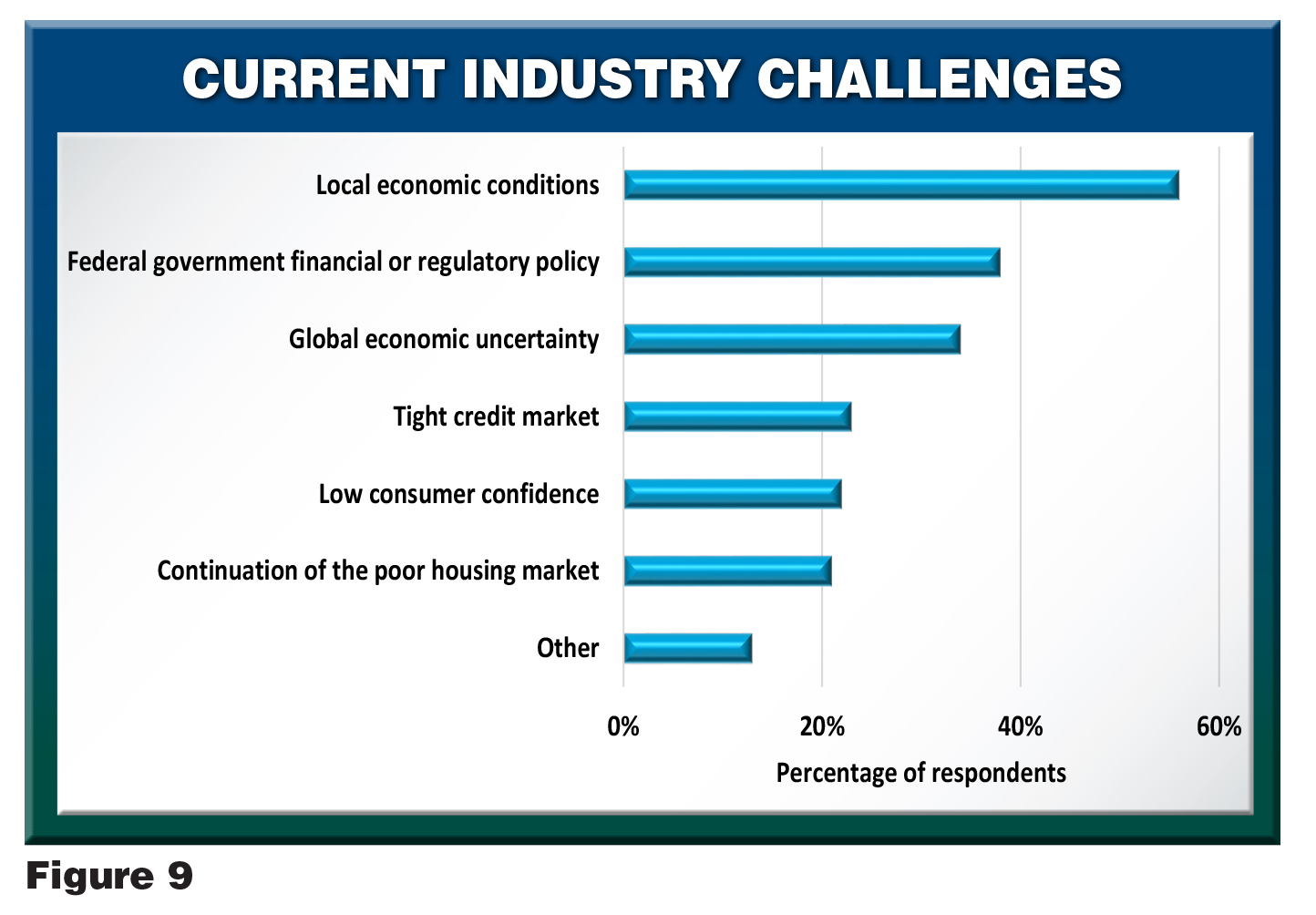
Regarding individual company roadblocks, finding and retaining
qualified employees (69 percent) remains the most pressing concern for
respondents. The higher cost of doing business is another significant issue,
impacting more than half of participants. In addition, more than 40 percent
identify changing industry conditions as a problem.
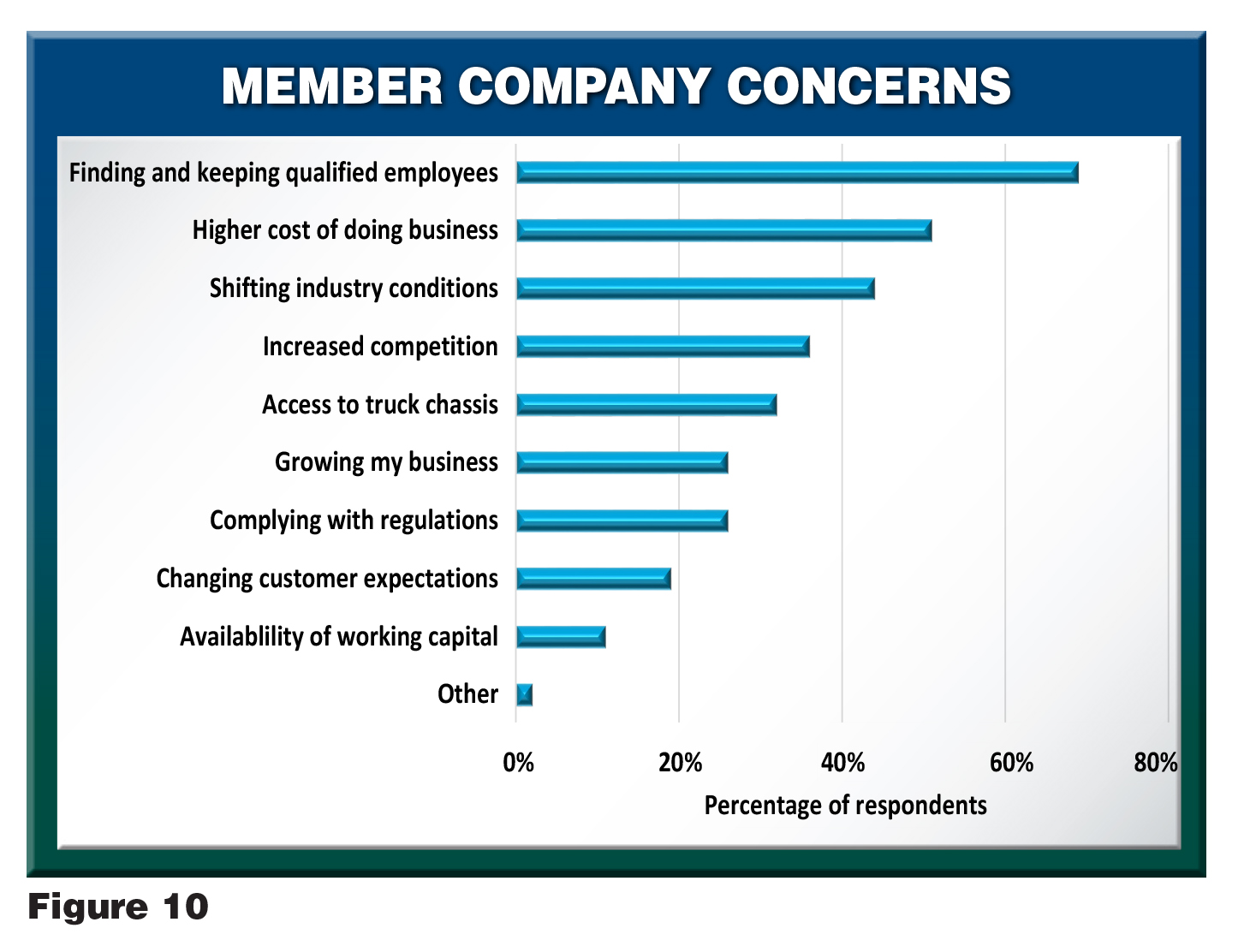
Tactics for
success
In terms of business development strategies,
expanding product offerings or product lines and entering new markets are
preferred approaches. Lesser considerations include being selective on jobs
taken to maintain higher profits and focusing on specialized markets.
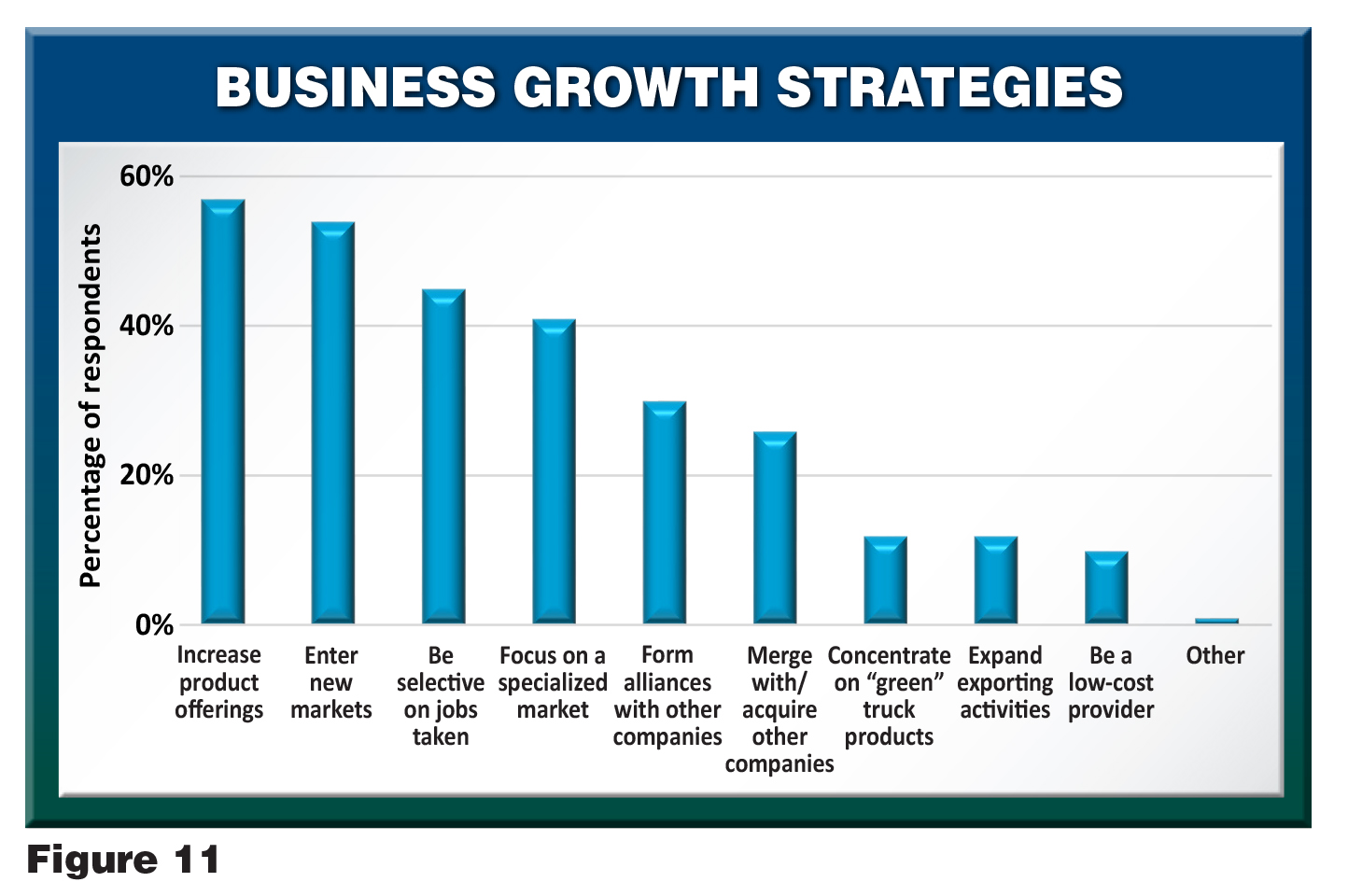
Looking
ahead
The work truck industry has been stable for the
last several years, and the forecast remains consistent through the rest of
2015. While member companies face concerns about economic vitality, as well as
upcoming federal rulings, a general sense of optimism prevails.
Distributors and manufacturers anticipate a variety of future business
opportunities, including:
- Expanding facility size to
boost production
- Merging or acquiring another
company
- Building inventory
levels
- Streamlining the purchasing
process
- Obtaining large contracts to
build identical units
- Growing the dealer
network
- Exploring other fuel delivery
markets
- Improving the customer
experience
- Tapping into the green
initiative
As previously noted, members face challenges, such as locating quality
staff, accommodating higher business costs and responding to industry shifts.
Survey respondents identified additional threats to company
growth and future success, including:
- Competition
- Foreign markets
- Truck pools
- Employee healthcare and
benefits
- Slow research and development
advances
- Lack of working capital
- Physical space
constraints
Survey results suggest distributors and manufacturers are taking
advantage of current market conditions, aggressively testing growth strategies
to elevate their position. NTEA aims to help member companies achieve their
goals by providing targeted programs, tools and resources. To learn more about
Association offerings, visit ntea.com or contact
NTEA Senior Member Services Manager Luci Pfaff at 248-479-8148 or
luci@ntea.com.